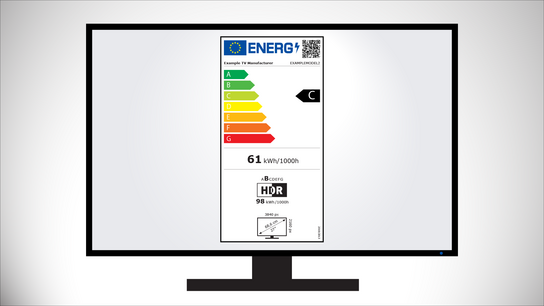Some electronics sold in the European Economic Area (EEA) will get new energy-efficiency labels in March 2021. You’ll see the new labels on the most energy-hungry domestic appliances; including refrigerators, dishwashers, televisions, and more. The European Union (EU) has introduced some interesting new product information requirements for the new energy-efficiency labels. This is information that must be provided before the manufacturer can market their products in the EEA.
I found three of the new information fields for products in the electronic display category especially intriguing. “Electronic displays” includes, e.g. televisions and stand-alone computer monitors, but not projectors, screens smaller than 100 ㎠, and integrated all-in-one devices like smartphones and laptops. Here are the three new information fields that piqued my interest:
- “Field 21: Minimum guaranteed availability of software and firmware updates (until): [date]”
- “Field 22: Minimum guaranteed availability of spare parts (until): [date]”
- “Field 23: Minimum guaranteed product support (until): [date]”
Starting in March 2021, you’ll be able to know the minimum guaranteed dates for how long your new smart TV or computer monitor will receive software updates, have replacement parts available, and manufacturer-provided support and repairs. As far as I can tell, no manufacturer has volunteered any of these dates or given any such commitments. The information is intended to help extend the product lifetime and reduce electronic-waste in the EEA.
This is a huge win for consumers! You’ll finally be able to make an informed decision not to purchase that stupid Smart TV that won’t receive software updates for more than six months. I’ve reached out to manufacturers in the past to inquire about how long a product will receive updates. I’ve never received a straight answer. The manufacturer must set a date at least eight years from the time the product model first becomes available for sale in the EEA.
The new information fields won’t appear on the energy-efficiency label itself. Instead, you can scan the QR-code on the label with your phone to look-up the product in the European Product Database for Energy Labelling (EPREL). The database website is expected to go online sometime later in .
I’ve been arguing for years that internet-connected devices should be required to feature prominent best-before date labels. The date should be the end-of-life/support date for the product. I’d hoped to see this for computers and smartphones, but I’ll not complain about monitors and televisions being first in line to be covered under such regulatory requirements.
Unfortunately, the regulation hasn’t set any requirements or defined what is meant by “software and firmware updates.” Manufacturers are required to ensure that any updates they make remain available until at least the date registered as part of their energy-efficiency labeling. However, there is no requirement that they undertake the ongoing work and develop any security and maintenance updates. Here is what the regulation does say about it:
(a) The latest available version of the firmware shall be made available for a minimum period of eight years after the placing on the market of the last unit of a certain product model, free of charge or at a fair, transparent and non-discriminatory cost. The latest available security update to the firmware shall be made available until at least eight years after the placing on the market of the last product of a certain product model, free of charge.
(b) Information on the minimum guaranteed availability of software and firmware updates, availability of spare parts and product support shall be indicated in the product information sheet […].
EU Regulation 2019/2021: Annex II. Ecodesign requirements: E. Information availability requirements: 1. Availability of software and firmware updates
In my opinion, there should have been much stricter requirements to provide maintenance and security updates. Such requirements should include a requirement to provide timely security updates after the manufacturer has been made aware of a security issue. The manufacturer should also be required to maintain the feature set that was available when the product was introduced on the market.
Functional software and security updates are essential to extending the lifetime of any internet-connected product. The EU can’t hope to reduce electronic waste by legislating requirements for spare parts and technical support alone. The device also needs functional and secure software.
Security researcher Scott Helme has also warned about the internet-communication issues that eventually affect unmaintained devices. An aspect of the secure internet communications protocol known as HTTPS requires ongoing updates. Without these updates, the device will eventually be unable to communicate with online services including the manufacturer’s update servers and online content providers.
I also want to add a similar warning of doom and gloom for unmaintained devices: devices require ongoing updates for accurate time-keeping and time-zone definition changes. The EEA is expected to abandon seasonal changes of time (“daylight-savings time”) in . (Although, COVID-19 may have delayed the process.) That’s a huge time-changer that unmaintained devices won’t be aware of. Accurate time is required for HTTPS to function properly.
Samsung demonstrated in that software updates can also be dangerous if mishandled. A bug on their update server — ironically the underlying issue was the lack of available updates — caused the company’s Blu-ray players to go into a never-ending reboot-loop. The devices needed to be taken in to service and be reflashed with new firmware by a Samsung technician.
